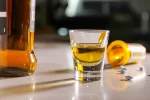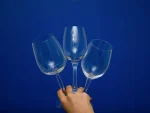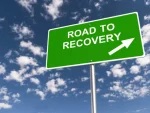Peyote Use: An Overview of the Side Effects and Addiction Treatment
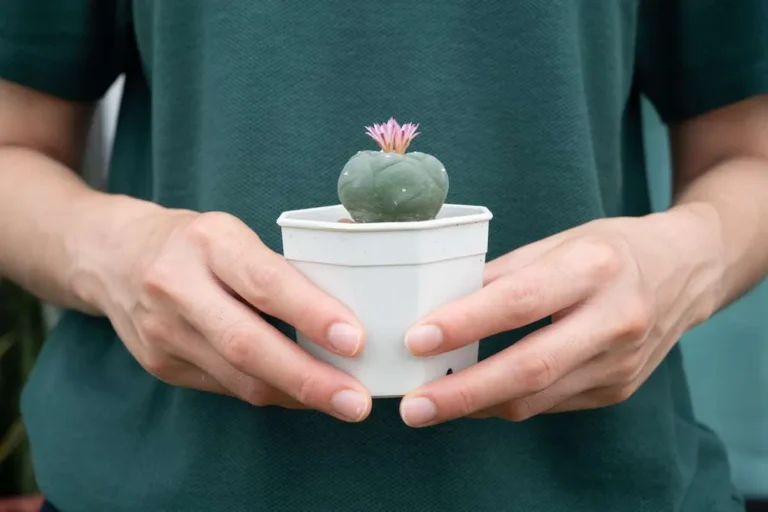
Peyote is frequently used in Native American cultural practices. However, it is associated with serious risks. People who consume it experience realistic visual hallucinations and other symptoms. In this guide, we will explore the lasting effects of the peyote drug and the perils associated with its misuse. While most people experience nausea, disorientation, and increased heart rate, there are many more perilous effects to the consumption of this substance besides physical responses, requiring in-depth investigation.
What is Peyote?
Peyote is a cactus native to the deserts of South America. It contains mescaline, a psychoactive alkaloid. It potentially causes dependence due to misuse. Individuals often consume peyote when chewing the buds or adding it to tea. Some smoke it together with marijuana, which exacerbates its effects. Native Americans call it hikuri. This drug was historically referred to as peyotl, which is similar to its modern name.
What does peyote do? People who consume this plant stay in an altered state of consciousness for up to 12 hours. Even after the effect of the drug wears off, individuals may still experience a sense of disconnection with reality, causing extreme anxiety and panic. Like psilocybin, peyote has many side effects. They cause serious paranoia and lead to potentially dangerous behaviors. These effects significantly impact one’s health outcomes.
In the U.S., the consumption of peyote cactus is regulated under the CSA rules. However, the members of the Native American Church are allowed to use the substance, as it is stated in the American Indian Religious Freedom Act. Almost 250,000 Native Americans utilize peyote legally for religious purposes, as they are exempt from the limitations imposed by the government.

Take back control of your life and start on the road to recovery now.
Is Peyote Addictive?
According to SAMHSA experts, mescaline, like other hallucinogens, is less addictive than other drugs. However, one should not downplay its impact on mental health. Mescaline is a part of the phenethylamine class of substances. When one consumes peyote, they go into an altered state of mind and start seeing unreal things. Some people reported they experienced auditory hallucinations and started having destructive thoughts.
Many people wonder, “Are psychedelics addictive?” and seek clear, science-based answers to understand their real impact on the brain and behavior. The effect of these substances on health depends on the frequency of their consumption. Those who start to overly rely on drugs to handle stress often find themselves unable to stop.
Peyote Side Effects
Mescal buds seem harmless until a person starts experiencing hallucinations. Like LSD, peyote is far more dangerous than many individuals think. Here are the main short-term side effects one may notice:
- Altered psychological states. Mescalin affects a person’s consciousness and perception of time and space. Many patients complained about uncommon thoughts occurring to them. Some become overly introspective, while others experience extreme elation. Mood shifts cause emotional disturbance to those who need to stay calm to concentrate on a specific task.
- Short-term physical effects. Common symptoms include a high heart rate, increased blood pressure, extreme sweating, and high temperature. These effects gradually decrease.
- Drug dependency. Even though peyote does not cause physical addiction, its frequent usage may result in psychological dependency. People who cannot deal with problems they face in real life consume peyote to cope with chronic stress and escape from reality. Increased drug consumption may lead to compulsive use and make it impossible for a person to deal with cravings without help.
- Mental health issues. High doses of peyote are associated with a higher likelihood of developing serious health issues like hallucinogen persisting perception disorder (HPPD). Some patients reported hallucinations and flashbacks long after they stopped consuming the drug. Besides worsening the existing mental health issues, drug abuse may cause new ones, including depression and psychosis.
It may be impossible to fully get rid of peyote dependence without professional psychological counseling. Psychotherapy remains one of the most efficient methods yielding tangible results. It allows one to understand the cause behind their destructive thoughts and actions and adopt a healthy lifestyle. Inpatient treatment programs are often necessary to help one recuperate in a safe space under the supervision of medical professionals. Besides, support groups and therapy sessions help patients achieve sustainable progress and discover new ways of dealing with stress and depressive thoughts.

Common Signs of Peyote Misuse
As this drug is not directly associated with physical dependency and its effects quickly wear off, it is often challenging to recognize the symptoms of misuse. However, prolonged substance abuse will inevitably harm a person’s life. Here are the main signs one should be aware of when trying to decide whether their loved ones are in danger:
- People become more secretive about their peyote consumption habits. They start lying to their relatives to hide their addiction.
- Addicted individuals neglect their immediate responsibilities and favorite activities.
- Drug addicts suddenly withdraw from their close circle.
- People engage in risky behaviors. It may lead to road accidents or problems at work.
- Insomnia and other negative sleep patterns.
- Loss of appetite.
- Personal hygiene issues.
- Irritation of the eyes or gastrointestinal problems.
If these signs are present, one has a serious issue that they fail to address. A supportive environment and enrollment in efficient treatment programs are necessary to return to full health.
How to Become Free from Peyote Dependence
The first thing one should do after noticing the effects caused by drug misuse is to undergo a professional assessment. Healthcare specialists will recommend the most result-yielding treatment strategy depending on an individual’s needs. A patient should schedule an appointment with a professional who specializes in helping people overcome their addiction. Medical providers have extensive knowledge on how to deal with dangerous side effects during the withdrawal stage. They suggest combining medical treatment with other time-tested strategies.
Mental health professionals look into the causes of addictive behaviors and show clients how to use efficient techniques to cope with stress. A patient needs to adopt a comprehensive approach to addiction treatment to overcome cravings and withdrawal symptoms. Here are the most widely used methods that have demonstrated their efficiency.
- Cognitive-Behavioral Therapy (CBT). It allows patients to detect and adjust destructive thought patterns and change behaviors. As a result, one develops coping strategies and learns how to avoid relapses. Other types of therapy, like MET, focus on improving motivation to ensure a patient will stay committed to positive changes. It allows individuals to understand the harmful effects of the drug and move toward recovery faster by setting achievable objectives.
- Therapy sessions. An individual can significantly benefit from discovering the reasons behind drug misuse. Raising awareness about the emotional factors causing substance use disorders (SUD) is the first step toward addressing them. Group therapy facilitates getting peer support and learning from those who face the same challenges.
- Dual diagnosis programs. Many patients have a co-occurring mental illness, exacerbating the impact of SUD. Addressing both issues simultaneously allows one to advance toward better health.
- Medical supervision. Staying under the supervision of medical specialists empowers one to manage the physical symptoms caused by the misuse of the hallucinogen.
- Psychedelic-assisted therapy. Controlled peyote use diminishes the effect of sudden withdrawal on the central nervous system and allows the body to adjust to a healthier lifestyle.
A holistic approach is best suited for those who want to address various aspects of SUD. Patients often experiment with mindfulness practices, use nutritional counseling services, and try out art therapy practices to discover an efficient way to abstain from the drug.
Withdrawal Symptoms
After a bad trip, many addicts understand the dangers of drug misuse and decide to abstain from smoking or consuming harmful substances. On the way to recovery, patients face several issues hindering their progress. They should adopt a comprehensive strategy to undergo detoxification with the assistance of medical staff and ensure that no traces of the drug are left in their bodies. Stay aware of the following symptoms associated with withdrawal:
- Anxiety;
- Diarrhea;
- High fever;
- Depressive thoughts;
- Nausea and vomiting.
Withdrawal effects from mescaline manifest from several days to weeks, depending on the health of a particular individual. The symptoms are almost the same as those experienced after stopping smoking tobacco products. After detoxification, one should attend therapy groups or counseling sessions to achieve sustainable results. Developing coping strategies and finding support networks is necessary to succeed. Efficient aftercare programs and tested relapse prevention methods facilitate dealing with the most unpleasant issues associated with the withdrawal stage.
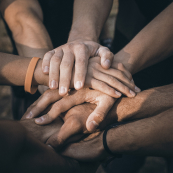
This can be a difficult journey, but you don’t have to go it alone. Let us be your guide and provide you the environment needed to regain control of your life and begin the path to recovery.
Recovering From Peyote Misuse
An overdose and prolonged drug use have disastrous health consequences. Given the cultural and religious significance of peyote use, it could be challenging to convince an individual that they need help. Professional support services assist patients and their family members with the available resources on the recovery process. Counseling and peer guidance help one to understand the factors causing the addiction and set the right boundaries when communicating with less supportive individuals.
Eco Sober Houses offers services to clients who are looking for a safe environment where they can recuperate after completing inpatient treatment programs. Our clean facilities and transparent rules appeal to those who want to establish a predictable routine to avoid getting distracted from their recovery goals. We introduced clear policies that require one to pay rent, do chores with others, and take regular substance testing. Our customers become a part of a nourishing environment where everyone’s needs are heard. It allows them to battle their addiction effectively and move toward a healthy life.


